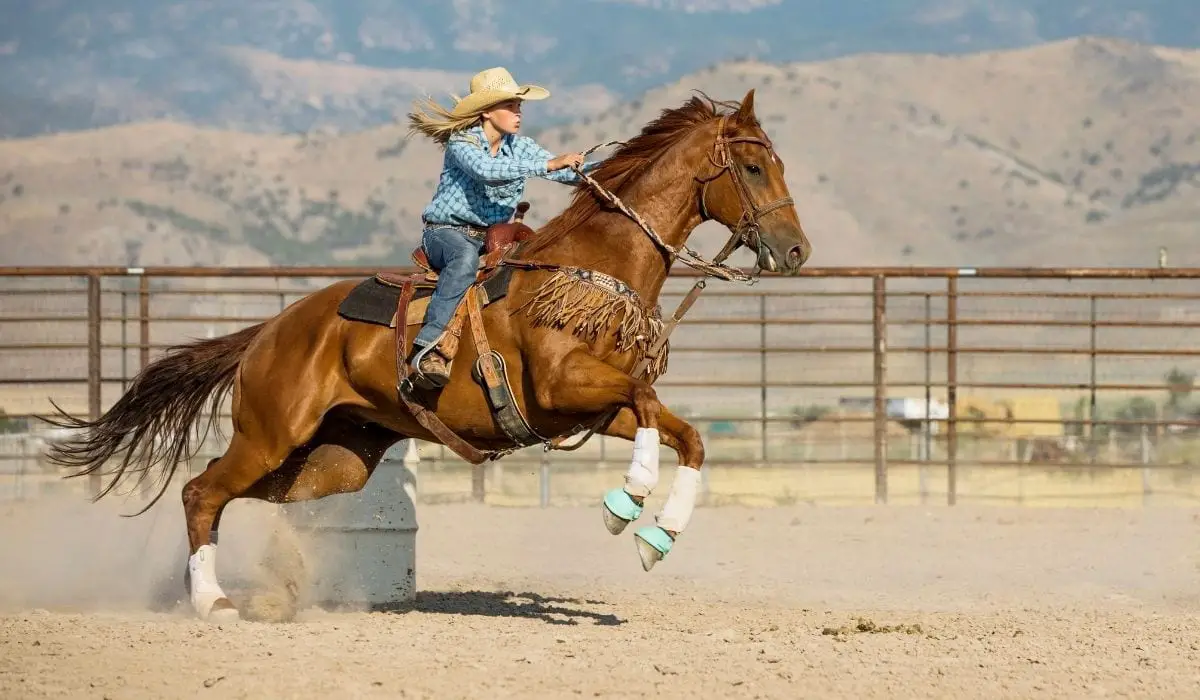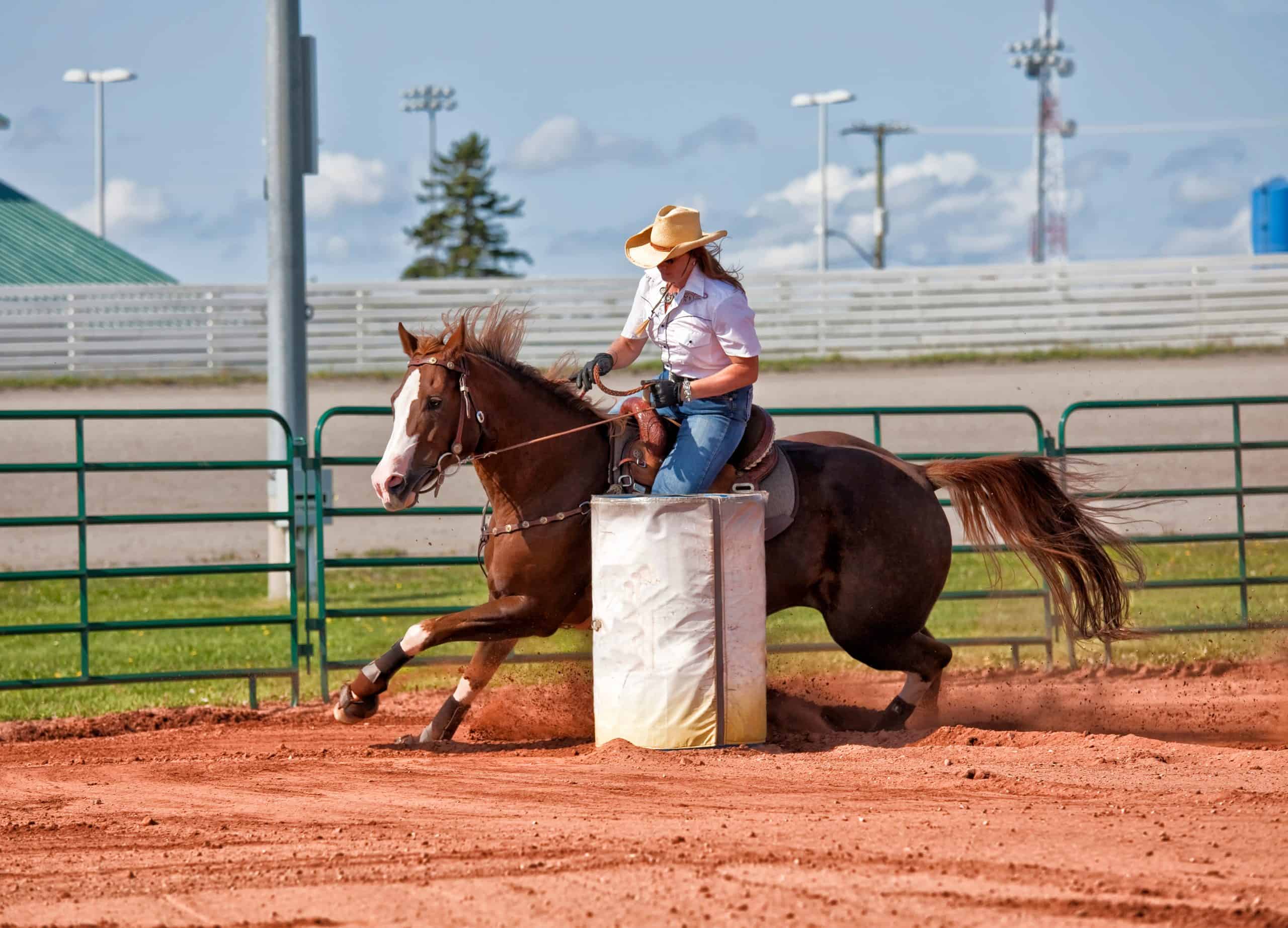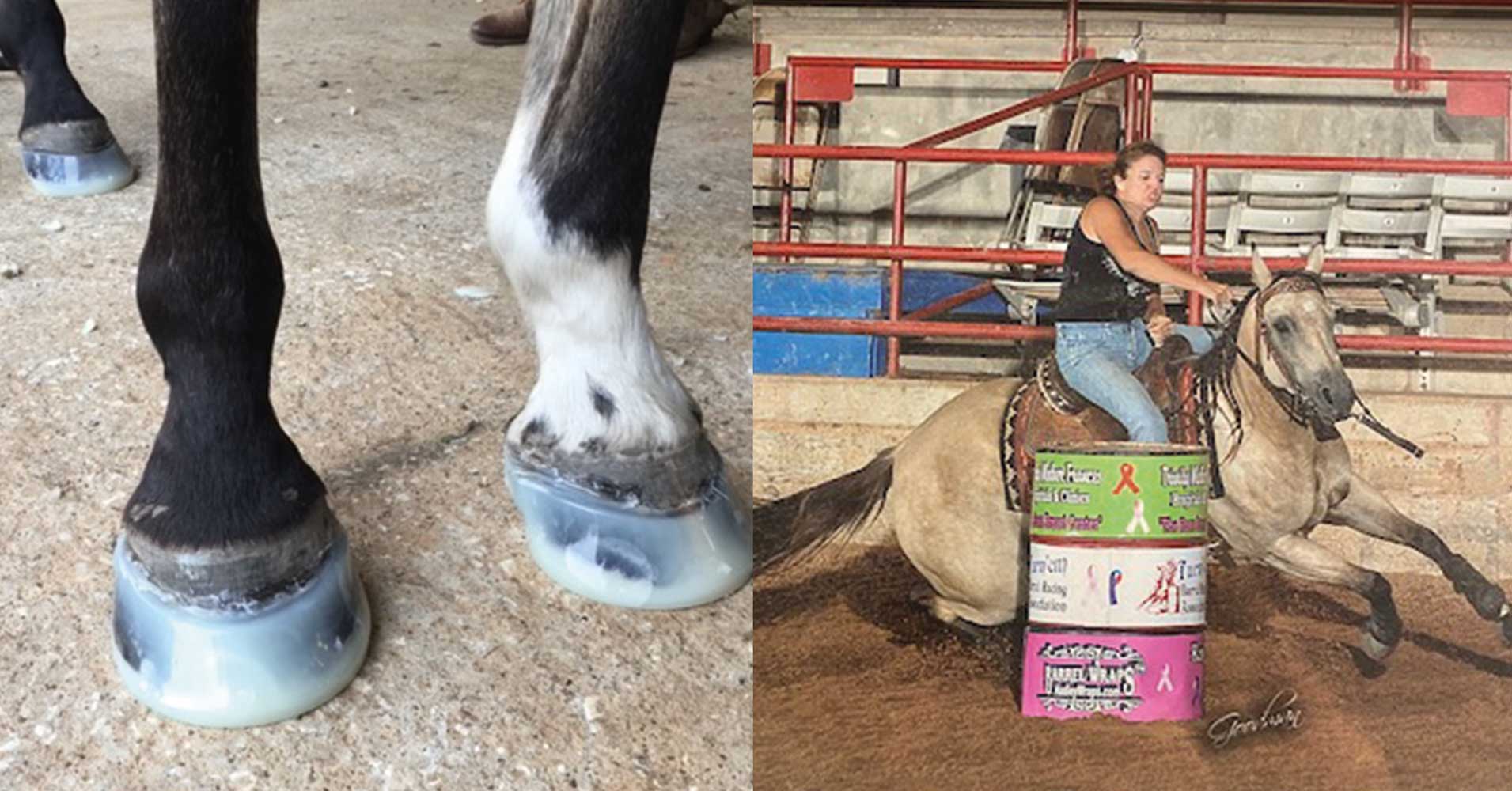Introduction to Barrel Racing

Welcome to the exhilarating world of barrel racing, a rodeo event that combines the thrill of horseback riding with the precision of timed competitions. This lightning-fast sport requires a blend of equine agility, rider skill, and of course, the right kind of horse. In this blog post, we will delve into what barrel racing horses entail, discuss the best breeds for the sport, and explore the training techniques that can lead to horse competition success.
Evaluating Equine Candidates for Barrel Racing Excellence

When assessing equine athletes for barrel racing, it’s crucial to consider a myriad of factors that contribute to their potential for success in this dynamic rodeo discipline. Horses destined for barrel racing prominence must have a harmonious combination of physical strength, mental sharpness, and a cooperative disposition to negotiate the cloverleaf pattern with precision and speed. This evaluation focuses on the physical attributes, temperament, and innate talents that are integral to a standout performance in the arena.
Discovering the Ideal Qualities in Barrel Racing Equines
American Quarter Horses often emerge as the preferred choice for their explosive acceleration and muscular build, essential for the quick sprints and agility demanded by barrel racing. These equines are not only physically suited for the sport but also exhibit a high degree of intelligence and trainability, making them reliable competitors in the high-stakes environment of barrel racing.
Diverse Breeds with Barrel Racing Potential
Though Quarter Horses are frequently spotlighted, there exists a spectrum of breeds that bring their unique strengths to barrel racing. Below are some examples:
- Appaloosa: Recognized for their signature coat patterns, these horses are adaptable and resilient, with an enduring work ethic beneficial for barrel racing.
- Arabian: Esteemed for their stamina and agility, Arabians can maintain consistent speed while displaying dexterity in navigating the barrels.
- Paint Horse: With their eye-catching appearance, Paints also boast a robust physique and innate athleticism, making them formidable contenders in barrel racing.
Profile of a Champion Barrel Racer
Top-tier barrel racing horses must possess a blend of speed, agility, and intelligence. They should be attuned to their rider’s signals, respond rapidly, and sustain their momentum as they execute the pattern. Key traits of these equine athletes include:
| Trait | Description |
|---|---|
| Physical Fitness | A well-muscled physique with powerful hindquarters enabling quick take-offs and halts. |
| Mental Acuity | Keen concentration and the capacity to stay composed in competitive scenarios. |
| Temperament | An amiable nature and readiness to follow the rider’s lead. |
| Responsiveness | Immediate response to rider cues, crucial for efficient barrel navigation. |
Cultivating Key Skills in Barrel Racing Equines
Beyond breed-specific attributes, barrel racing horses must develop certain skills to excel. They should be versatile, learning to modulate their pace and movement to align with the rider’s commands. An inherent affinity for the sport, demonstrated by a zest for running and a competitive drive, is also advantageous. While training can refine these qualities, the most promising horses for barrel racing often show these traits early in their development.
Securing the appropriate horse for barrel racing is a pivotal factor in a rider’s competitive journey. Recognizing the essential characteristics that define the elite barrel horse breeds and the attributes that signify supremacy in the sport allows riders to choose a companion that will enhance their abilities and boost their prospects of triumph in the spirited world of rodeo barrel racing.
Optimizing Equine Competitors for Rodeo Barrel Racing

The essence of rodeo barrel racing is a harmonious partnership between the agility of the horse and the strategic guidance of the rider. To stand out, these equine athletes must exhibit an exceptional ability for quick and graceful navigation around the barrels, displaying both elegance and raw power. Their natural inclination for rapid turns and the ability to muster a sudden, powerful sprint toward the finish are key to their success in this sport.
Dynamic Maneuverability in Barrel Racing
In barrel racing, dynamic maneuverability is essential, going beyond mere speed to include the capability to move with finesse and adaptability. Effective coordination of movement is paramount, allowing these horses to perform sharp turns effortlessly. The following factors are instrumental to dynamic maneuverability:
- Equilibrium: Essential for the horse to stay balanced and poised during swift turns.
- Kinesthetic Awareness: Crucial for the horse to be aware of its position and navigate effectively.
- Flexibility of Movement: Enables swift, seamless turns and transitions.
The Imperative of Velocity in Barrel Racing
Velocity is a fundamental element for horses in the barrel racing arena. A horse’s capability to initiate a gallop that outperforms its rivals is a significant advantage. Factors contributing to this impressive speed include:
- Initial Burst: The ability to quickly gain speed is essential for the race’s outset and the sprints between barrels.
- Stamina: The endurance to maintain a swift pace through the course is critical for a strong finish.
- Powerful Muscle Response: Necessary for sudden starts and stops throughout the competition.
Conditioning for Enhanced Maneuverability and Velocity
To cultivate these vital attributes, a well-planned training routine focusing on maneuverability and velocity is key. Beneficial exercises include:
- Weaving through obstacles: To refine flexibility and coordination.
- Targeted sprints: Aimed at developing muscular power and cardiovascular endurance.
- Varied pace workouts: To advance both endurance and speed capabilities.
Consistently integrating these activities into the horse’s training schedule can noticeably boost its competitive edge in barrel racing events.
Equine Biomechanics in Barrel Racing
A deep understanding of equine biomechanics is invaluable for enhancing athletic performance. Proper body alignment and efficient joint mechanics are critical to prevent injuries and maximize the horse’s capacity for the physical demands of rodeo barrel racing. The horse’s build plays a direct role in its maneuverability and velocity, thus it’s a significant factor for trainers and riders to consider.
Sustaining High-Energy Levels for Competitive Barrel Racing
Equine athletes participating in rodeo barrel racing require a nutrient-dense diet to maintain the vigorous energy levels needed for the sport. Optimal nutrition promotes muscle conditioning and recuperation, ensuring that the horse remains in prime condition for competition. Comprehensive care, including regular health check-ups and therapies like chiropractic treatments and muscle massages, is also essential to preserve the horse’s agility and overall health, keeping them prepared for the challenges of barrel racing.
Refining Barrel Racing Competence

Barrel racing demands a comprehensive approach to training that enhances the horse’s physical condition, mental alertness, and receptiveness to commands. The following methodologies are aimed at preparing the equine athlete for the high-energy demands of barrel racing while prioritizing the joint well-being of horse and rider.
Groundwork for Novice Horses
For horses new to barrel racing, it is essential to lay a foundational trust and a clear communication system. Groundwork exercises such as leading, lunging, and desensitization to different environments are critical in building a trusting relationship. These early sessions should remain engaging and concise to nurture the horse’s interest in the learning process.
Advancing Skills for Developing Competitors
Horses and riders who have grasped the basics of barrel racing can progress with exercises aimed at honing their abilities. To cultivate a more nimble and responsive horse, practices can include:
- Speed control drills to teach horses to modulate their pace approaching barrels
- Consistent pattern execution to solidify the cloverleaf sequence in the horse’s memory
- Lateral movement and flexibility exercises to improve agility
Advanced Strategies for Experienced Racers
Experienced competitors should engage in complex training routines that push the boundaries of horse and rider capabilities. This advanced stage of training may involve:
- Agility drills, such as rollbacks and tight turns, to sharpen turns and cut down on time around barrels
- Mock competitions to acclimate to the competitive environment
- Endurance and power-building exercises, such as interval training, for improved performance
Regular and methodical training ensures that both horse and rider maintain their skills and conditioning.
Enhancing Performance with Targeted Drills
Specific drills focus on particular elements of barrel racing, facilitating improvement in those areas. These can include:
- Figure-eight patterns to encourage even and controlled barrel navigation
- Responsive braking exercises to fine-tune the horse’s halting and immediate acceleration
- Varying barrel approach patterns to maintain the horse’s focus on the rider’s guidance
Customizing Training Based on Performance Reviews
Continuous evaluation of the horse and rider’s progress is crucial in tailoring training to their needs. Effective monitoring can involve:
| Strategy | Purpose |
|---|---|
| Video Review | For visual critique and adjustment of techniques |
| Timed Trials | To gauge advancements in speed and maneuverability |
| Reflective Discussions | To incorporate rider self-reflection and coaching insights |
Adjusting the training regimen based on these evaluations promotes ongoing development and optimal competitive form.
Enhancing Performance in Barrel Racing

Success in barrel racing is not solely a function of speed; it’s the culmination of various elements ranging from equine athleticism to the harmony between rider and horse. It’s essential to grasp the breadth of these factors on the path to victory.
Comprehensive Equine Conditioning
To thrive in competition, horses must be in peak physical condition and possess a sound mental state. A comprehensive exercise regime that improves strength, flexibility, and endurance, coupled with strategies to ensure psychological readiness, equips horses to perform optimally and cope with the pressures of competitive environments.
Adaptability to Varied Settings
Acclimation to a range of conditions can provide a competitive advantage. Horses familiar with diverse terrains and settings are more likely to maintain their composure in novel surroundings. This adaptability can be fostered by:
- Acclimating to different footing to enhance versatility.
- Conducting practices in varying venues to build confidence.
- Creating mock competitive scenarios to simulate event pressures.
The Influence of Appropriate Gear
Equine performance can be significantly affected by the choice of tack. Properly fitting and purpose-specific equipment, such as saddles and bridles, can contribute positively to the horse’s comfort and the clarity of rider commands:
| Gear Type | Function |
|---|---|
| Saddle | Provides balance for the rider and comfort for the horse. |
| Bridle | Enables precise communication via suitable bitting. |
| Protective Gear | Offers limb support and injury prevention during rapid maneuvers. |
Navigating Variables in Competition
Unpredictable elements such as weather, barrel types, and audience presence can influence a horse’s performance. Preparing for these variables through adaptable training is key:
- Weather Training: Conditioning in diverse climates for resilience.
- Barrel Variability: Using different barrels to ensure adaptability.
- Audience Exposure: Familiarizing horses with crowd noises to minimize stress.
Tactical Precision and Rider Agility
Strategic prowess during a run can dictate the outcome of a race. The rider’s ability to make swift, informed decisions and adapt to the horse’s strengths during the event is fundamental:
- Planning race tactics tailored to the horse’s unique attributes.
- Adapting in real-time to challenges encountered on the course.
- Analyzing previous runs to enhance future strategies.
Commitment to Rider Excellence
A rider’s expertise and dedication to ongoing development are pivotal. Consistent performance under pressure and a commitment to skill enhancement through various learning avenues can drive a team’s success:
- Systematic practice to advance riding skills.
- Embracing feedback for continuous improvement.
- Establishing progressive objectives to track advancements and sustain drive.
By meticulously addressing and integrating these aspects, horse and rider teams can fine-tune their approach to barrel racing, setting the stage for exceptional performances and a strong chance at triumph.
If you’re curious about the various roles horses can play in competitive sports and activities, you may wonder which breeds excel in events like barrel racing. In our articles, we delve into the characteristics of different breeds, such as the ones used for equestrian sports in what breed of horses are used for equestrian. We also explore the unique qualities of Arabian horses and Hanoverian horses to understand what they are commonly used for. Each breed brings its own strengths to various disciplines, and knowing these can help in choosing the right horse for barrel racing.
Conclusion
Barrel racing is a sport where the right horse can make all the difference. From the unparalleled Quarter Horse to other agile breeds, the selection of barrel racing horses is critical. With dedicated training and a focus on the factors that contribute to success, riders can achieve remarkable feats in the barrel racing arena. Let the thunder of hooves and the precision of the sport inspire you to reach new heights with your equine partner.



